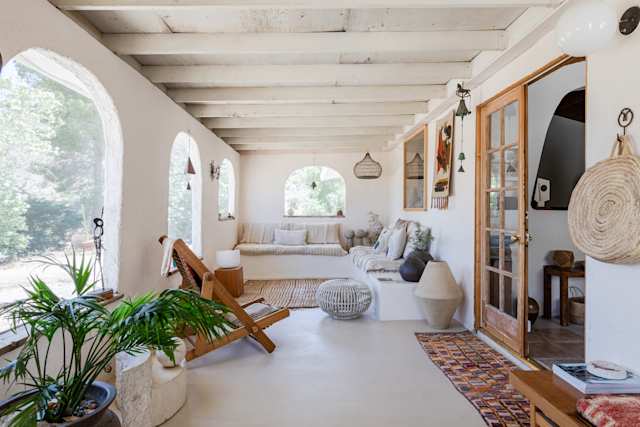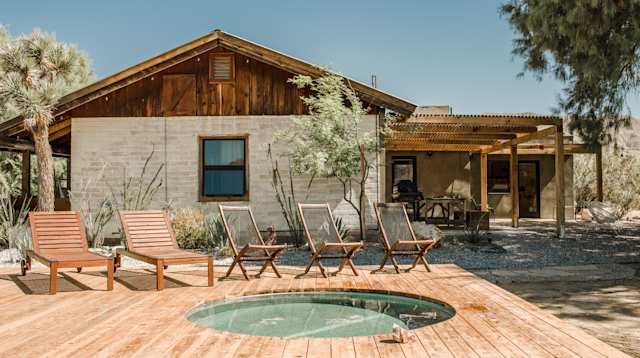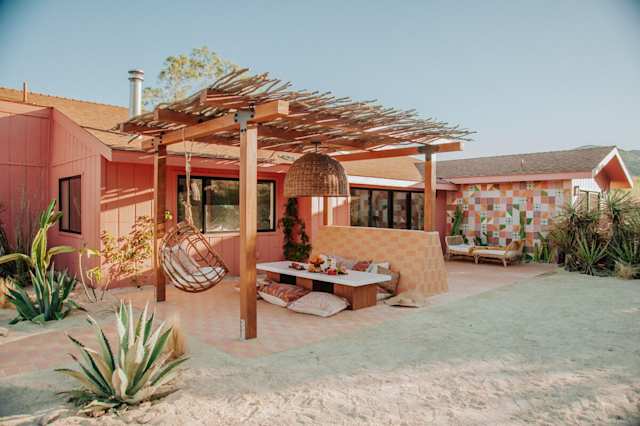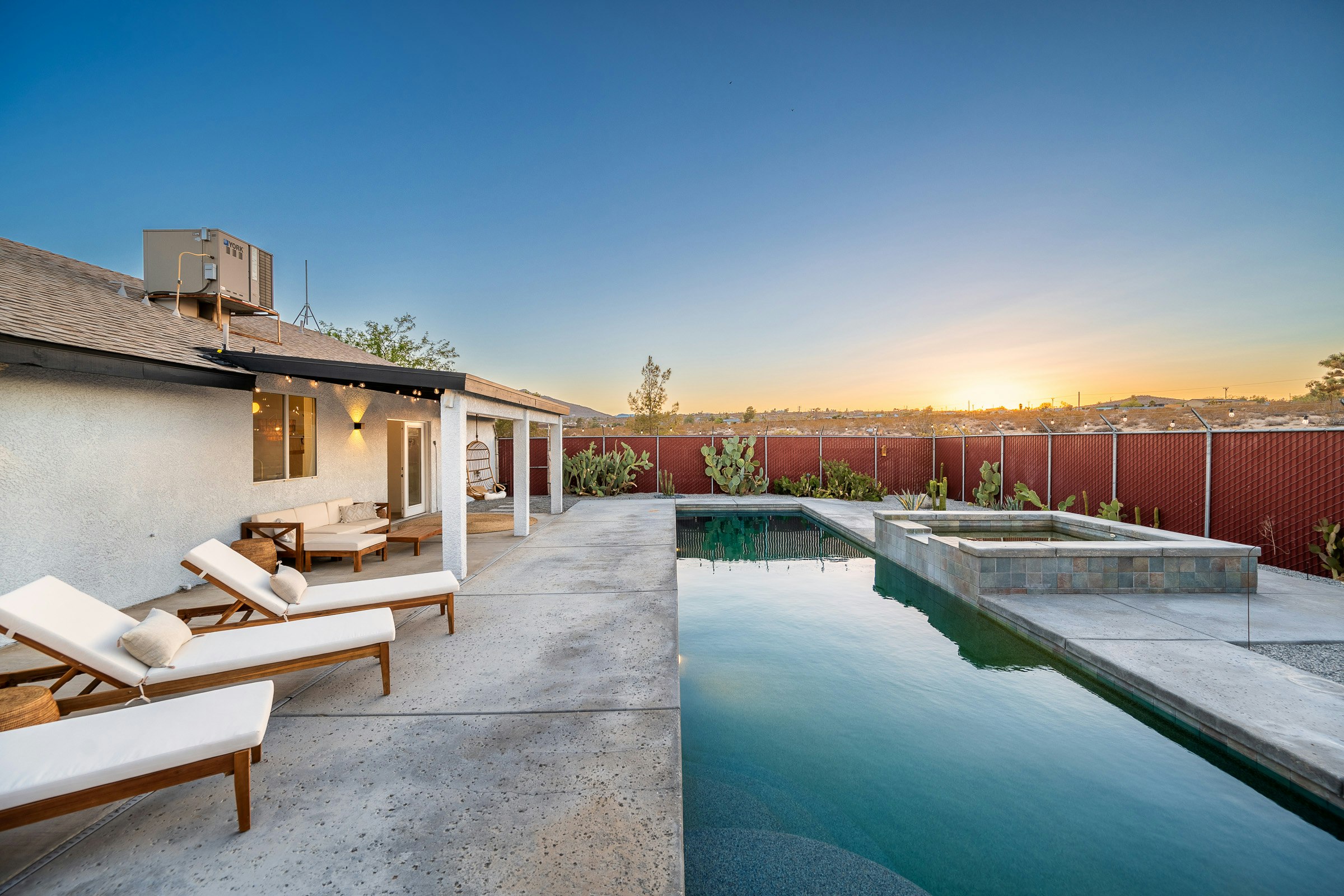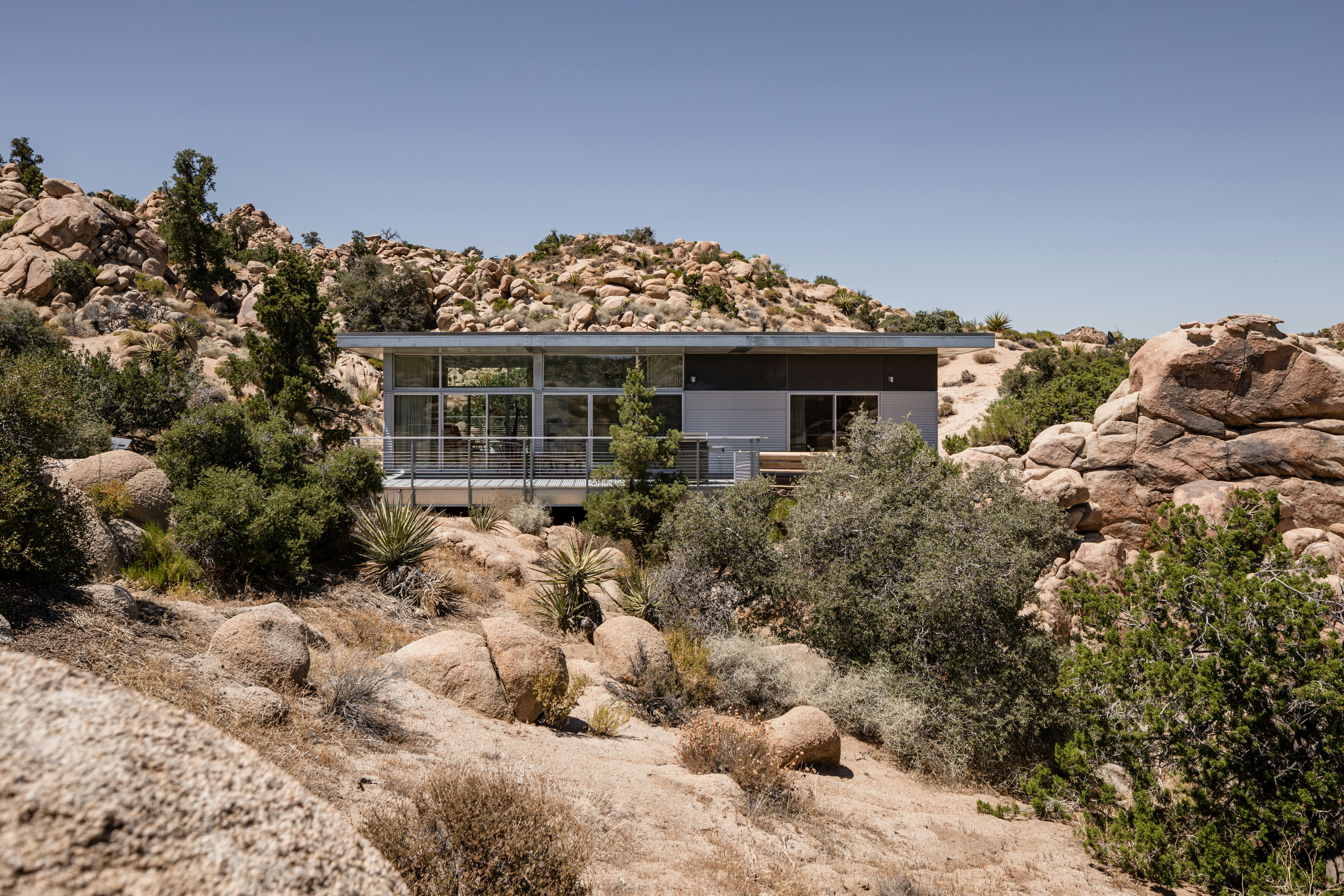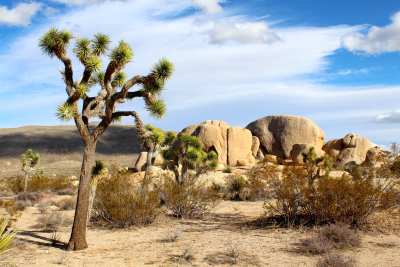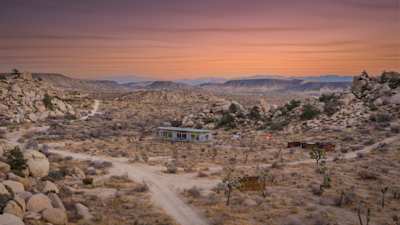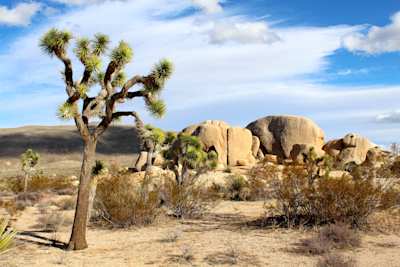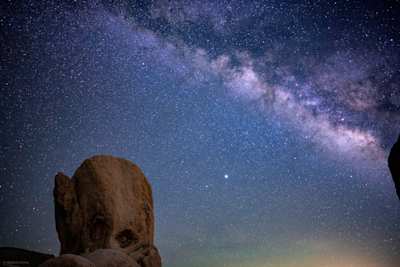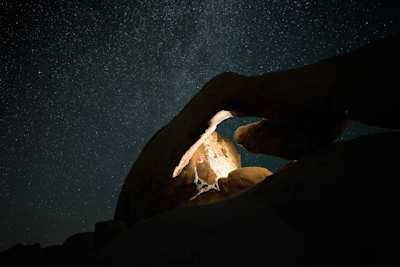An Expert Joshua Tree Guide for the Discerning Traveller
Thanks to its pair of desert ecosystems and unusual landscapes, Joshua Tree is like nowhere else on earth. Here’s what to do, eat and where to stay while you’re there.
~
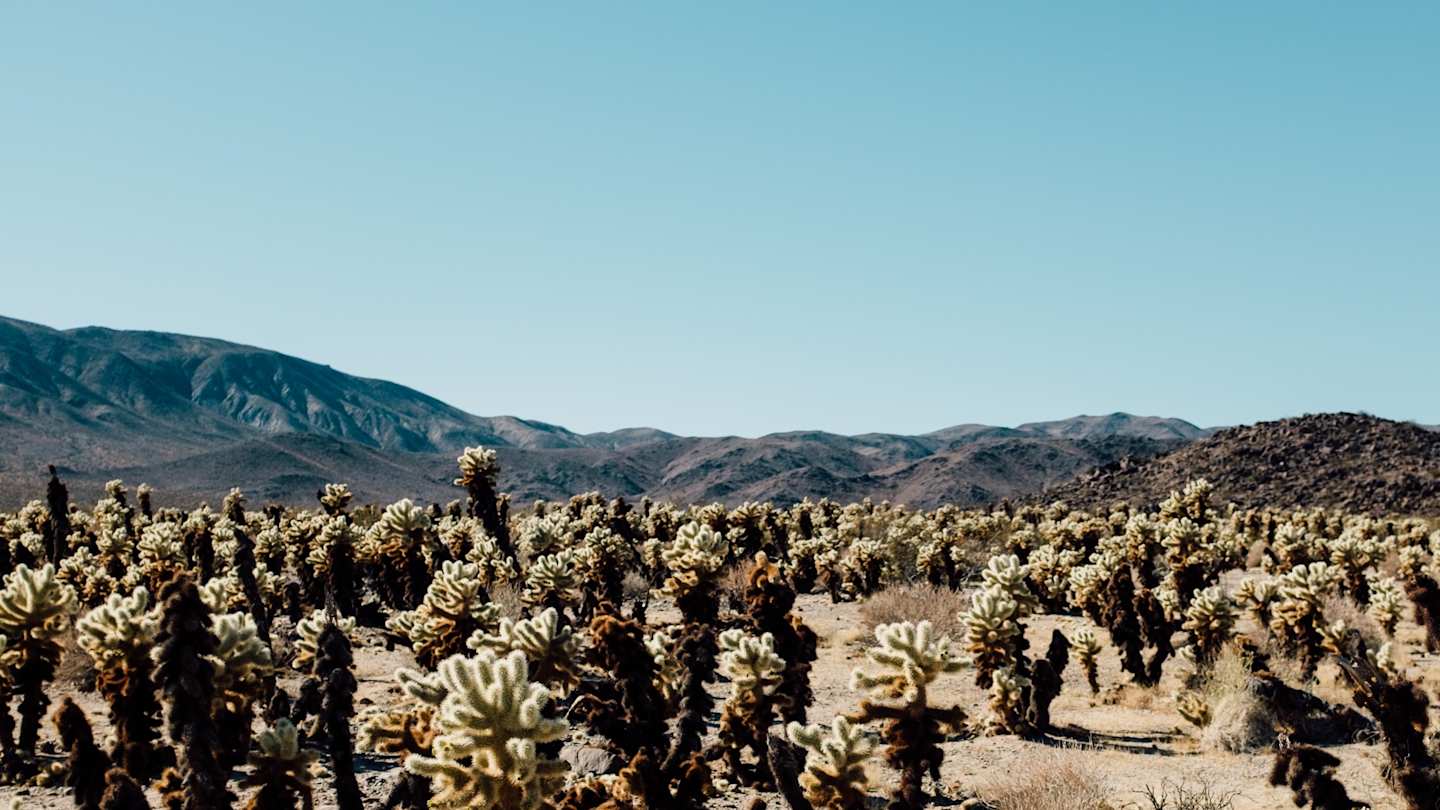
Characterised by gnarled boulders, smooth rocks, sun-scorched earth and the eponymous Joshua trees – a variety of Yucca with thick branches that end in spiky, cactus-like displays – Joshua Tree National Park is a fantastically picturesque place to explore. It’s well worth spending two or three days in the area in order to really make the most of the park, so let Plum Guide help you plan your itinerary with our recommendations of where to stay, eat and what to do during your trip. Here, our expert Joshua Tree guide.
How to get to Joshua Tree
Take a road trip through the Californian desert to reach Joshua Tree by car by following California Highway 62 or Interstate 10. The park doesn’t organise shuttle buses, so this will also allow you to have ease of access once you’ve arrived.
The main West Entrance is accessible from California Highway 62, as is the North Entrance in Twentynine Palms. You’ll take this road if you travel to the park from Los Angeles, San Diego or Palm Springs. The South Entrance is off Interstate 10, which you’ll use if you’re coming from Phoenix, New Mexico or Indio.
Stay right in the heart of the action in the community of Joshua Tree...
Next up on our Joshua Tree guide is where to rest your head at night. The most central place to stay is, unsurprisingly, the community of Joshua Tree, which is within a half-hour drive of the park entrance. This small unincorporated area is home to around 9,000 people, as well as the Joshua Tree Visitor Center. There are also some excellent cultural sights, including the Joshua Tree Art Gallery, Furstwurld art gallery, the JT & S Railroad Museum, and even the World Famous Crochet Museum. For refreshment, try one of the community’s cafes, or the Joshua Tree Brewery for something a little stronger.
...or pick one of the other towns that border the national park
Alternatively, choose to bed down in Twentynine Palms, where you’ll find the Joshua Tree National Park headquarters. You’ll be close to the park’s north entrance, making this an ideal location from which to explore Joshua Tree National Park. Look out for the 26 stunning murals around the city, which depict people, landscapes, animals and aspects of life in the desert.
Another option is to base your trip in Yucca Valley. This town is perfect for those wishing to hike the Black Rock Canyon Trail or Warren Peak Trail, as it lies near the entrance for these routes. While staying in Yucca Valley, there are two intriguing outdoor exhibitions worth visiting: the Noah Purifoy Outdoor Museum, which looks like a desert scene from Star Wars, and the Desert Christ Park, filled with sculptures of Jesus and his disciples.
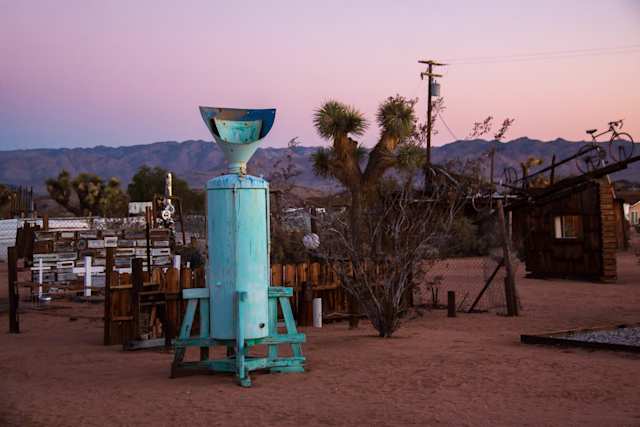
Noah Purifoy Outdoor Desert Art Museum, Joshua Tree, CA | Image by ChrisGoldNY is licensed under CC BY-NC 2.0
Finally, for something a little different, consider Pioneertown. This purpose-built town looks like it’s straight out of a cowboy movie – it was designed to be a live-in Wild West experience in the 1940s, and has since been used as the set for a number of Western films. Today, you can still stay in the olde-worlde Pioneertown Hotel, and grab a drink in Pappy & Harriet’s Pioneertown Palace, an atmospheric timber-frame structure with a wall covered in photos and newspaper cuttings of its famous visitors.
What to do in Joshua Tree
Naturally, any trip to Joshua Tree is likely to be centred on the national park itself, where you could spend days discovering myriad desert landscapes and rock formations along endless walking trails.
Clambering over the smooth, sand-coloured boulders of the Arch Rock Nature Trail is a must-do, stopping for a photo at the uniquely arched rock from which the route takes its name. It’s also worth following the dedicated walkway of the Cholla Cactus Garden, admiring the spiky plants and the incredible scenery that surrounds them. More challenging hikes include the Boy Scout Trail, which leads to the craggy Wonderland of Rocks, and the two-or-three day California Riding and Hiking Trail.
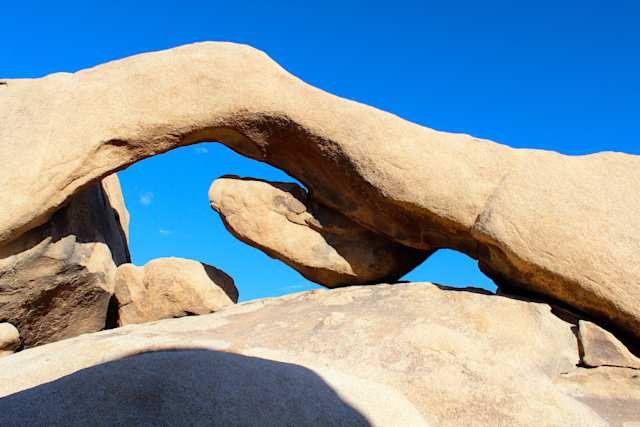
Arch Rock, Twenty Nine Palms, Joshua Tree
Joshua Tree is famous for its rock climbing, with more than 10,000 climbing routes within its borders. A particularly popular option is the north wall of Echo Cove – look out over the precipice to admire the park stretching out in miniature down below.
Arguably the best view of Joshua Tree is from Keys Point, which is particularly special at sunset, when the boulders turn from sand-yellow to a deep, dusky orange as the sun disappears.
Where to eat in Joshua Tree
Rounding off our Joshua Tree guide is a round-up of the area's best restaurants. In order to maintain its authenticity, the community of Joshua Tree hasn’t changed much since the 1960s. This means that you won’t find many recognisable fast food brands in the area. What you will discover are some excellent independent places to eat.
Try the Joshua Tree saloon, which looks exactly how you’d expect, and serves steaks and burgers at its bar and grill. The brightly painted Crossroads Cafe is a brilliant breakfast spot, and when you’re bored of American-style dining, head over to Sam’s Indian Restaurant.
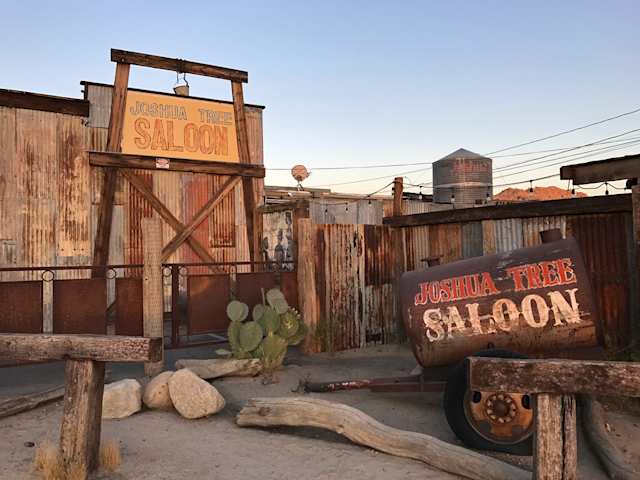
Joshua Tree Saloon | Image by Landscapes in The West is marked with CC PDM 1.0
For special occasions, it’s got to be the 29 Palms Inn, where the chefs incorporate freshly grown produce from the hotel garden into their creations, or La Copine in Yucca Valley, a farm-to-table bistro that reinvents your favourite American dishes.
Alternatively, pick up your own food to eat on-the-go or prepare at your holiday home from the Joshua Tree Certified Farmers Market, which takes place every Saturday.
